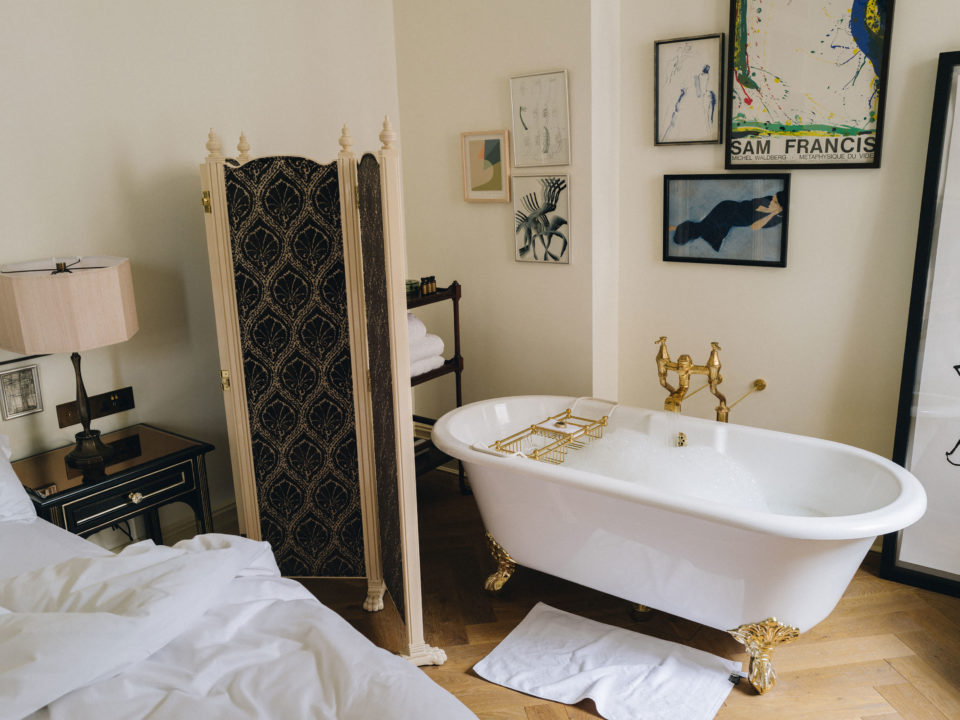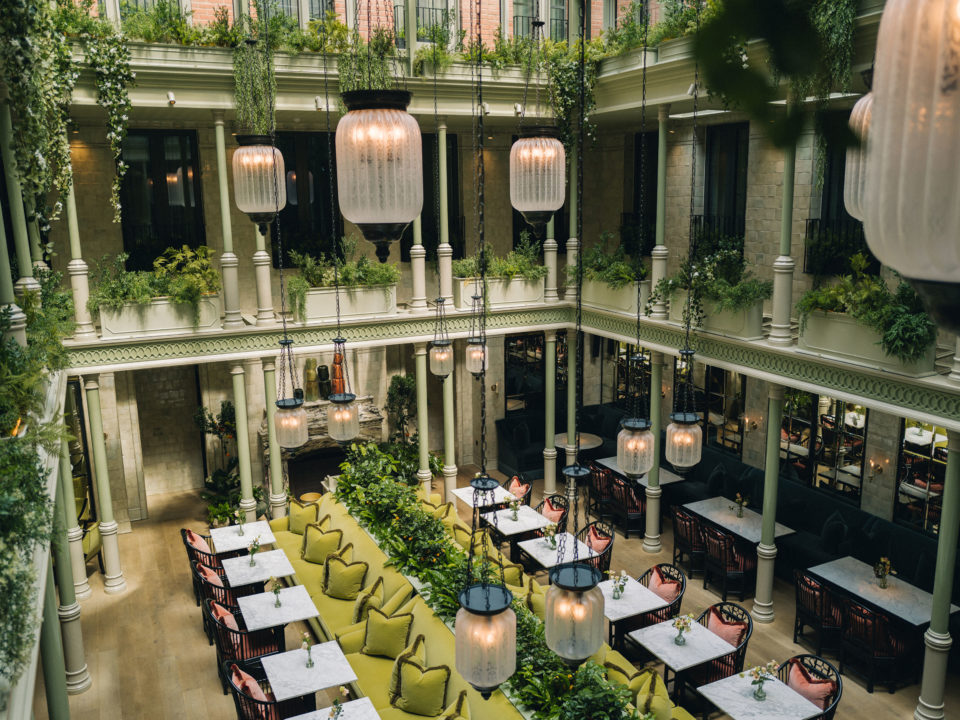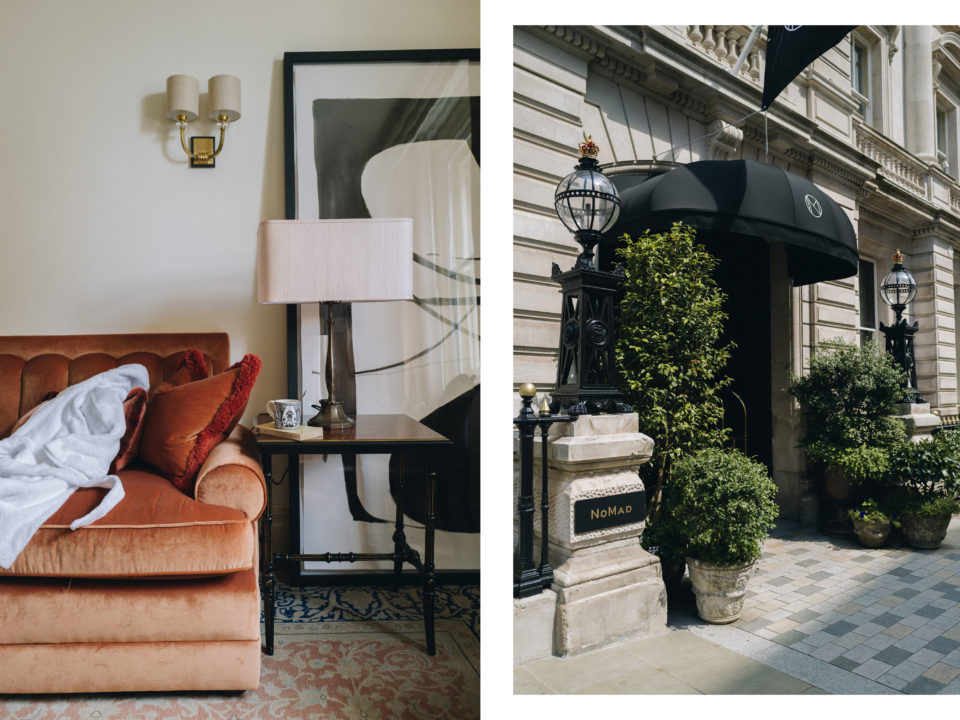The titular NoMad is a portmanteau of North of Madison, in the New York tradition of SoHo, Nolita, Tribeca et al, hence its capitalised M. That the word also has travel connotations – ‘a person who does not stay long in the same place; a wanderer’ to quote the dictionary – made it doubly apt for a hotel sat proudly on the corner of Broadway and West 28th Street. And sure enough, in the near decade that’s followed, some nomadic inclination has seen NoMads Los Angeles and Las Vegas join the family. But while they might be shot through with the spirit of nomads, these hotels have always felt remarkably at home in their surroundings.
So what happens when the very newest surroundings are in a whole different continent? The answer, which is apparent two months on from NoMad London opening its doors, is that a hop over the Atlantic has done little to dim that sense of place.
It could well have been, if you’ll excuse the pun, something of a trial. Because this was not a straightforward opening, this was a wholesale repurposing of an iconic Covent Garden building: the Grade II-listed Bow Street Magistrates Court. It had stood empty in its prime plot opposite the Royal Opera House since 2006, its 19th-century Portland stone facade slowly dulling.
After a couple of aborted hotel projects, the keys to the court were eventually given to the Sydell Group (the parent company which birthed the NoMad concept and, subsequently, the Line and Freehand hotels) via their investment partners. Conveniently, the group had form, pairing up with Soho House to transform the long-dormant Lutyens-designed Midland Bank building in the city of London into the Ned in 2018.
For such a project to work, explains Andrew Zobler, Sydell’s CEO, ‘It’s important to work with the building that you are going to transform. If you fight the building then you lose’.
And this became the guiding principle for the metamorphosis from faded court building – home to high-profile trials of Casanova, the Pankhurst sisters and the Kray twins, among others, in its 266 year history – to statement hotel. ‘The existing building informed nearly all of our decisions about design’ says Zobler. ‘You win by embracing what is there and building upon it’.
Renowned New York design studio Roman and Williams were tasked with the transformation – fresh from their work on, fittingly, the British Galleries at the Metropolitan Museum of Art – and more than three years of construction began.
Their vision, says studio co-founder Stephen Alesch, was for the NoMad to be ‘Beautiful, bohemian and evocative all at once. The building is so powerful and remarkable that you are embraced by its strength, while the rich and textured interiors balance the bones. There is a tension between this muscularity and softness that creates a powerful narrative for the guest’.
On first seeing the finished article some months ago, it’s fair to say the words beautiful, bohemian and evocative were never far from my notebook.
There’s some showiness, too, particularly in the triple-height central atrium restaurant which was formerly a courtyard for police vehicles and is now filled with diners gazing upwards in awe. Rooms are lofty and full of tactile details.
The actual courtroom itself has been left as an elegant events space, spruced with some moody majesty courtesy of a dusky dreamscape by artist Claire Basler and some deco-ish chandeliers (the perfect backdrop for ‘Nick Cave getting married in the middle of a Gucci photoshoot’ to quote my excellent tour guide that day, Sydell brand director Kristen Millar).
The main bar, Side Hustle, was where defendants would be taken to get booked (hence its separate street-side entrance) but is now a space of considerable conviviality with cosy leather booths, a gleaming marble counter and several walls worth of Martin Parr photos and LA street scenes. A decadent basement lounge-cum-club, Common Decency, opened later.
But subtlety is also at work. A quick glance at the artwork in the debonair Fielding Room (named for magistrate and reformer John Fielding) and you’ll see ornate paintings of china plates; look closer and you’ll realise they’re from artist Julie Green’s last supper collection documenting the final meals of death row inmates.
Browse the well stocked library and, alongside fine art and photography tomes, you’ll find the sorts of things a real London home might stock: the odd pub guide, that Polpo cookbook… Shirts sported by the staff nod to part of the police uniforms worn by the building’s former residents.
It almost goes without saying in any contemporary story that plans, dates and deadlines were derailed by the pandemic. But it did offer up a unique opportunity with their neighbours. ‘There was a lot of study before we got started’, says Andrew Zobler, ‘but where things really got informed by the neighbourhood was when we had the chance to work with the set designers from the Royal Opera House who were uniquely available to collaborate with us on various public spaces because the Opera House was closed’.
Their stage was even given over for inspiration to dancer-turned-artist Caroline Denervaud as she painted more than 100 large-scale expressive works for the hotel. (If you seek similar inspiration, spend the night in the aptly named Royal Opera Suite, and you can gaze back at its iconic arched roof from the comfort of your copper-bottomed bathtub.)
The court’s original architect had set out to make it ‘of rather ornamental character, so as to harmonize to some extent with the opera house opposite’ so there’s a sense of designer kismet at work.
So is reflecting on the past from such an inviting present part of the NoMad’s allure, perhaps? Zobler is affirmative. ‘There is something magical about taking a building where there was so much pain and turning it into a place for pleasure’.
The greatest pleasure has come in the last couple of months as guests have finally been allowed in. I’ve returned numerous times since that almost ghostly April visit – to dine, to drink, to work – and seeing its spaces filled with people is transformational. Zobler agrees: ‘It’s all just conceptual until you see how people like to use the spaces you’ve created. It is when you mix in the guests that the building really comes to life’.
And come to life it has. It’s settled seamlessly into the landscape, the latest milestone in Covent Garden’s renaissance, fulfilling the ultimate character arc from ‘building you hope you never have to go’ to ‘building you can’t wait to return to’. Nomads welcome, of course, but this place isn’t going anywhere.
For our verdict on where else to check in this year, read our 2022 hotlist






